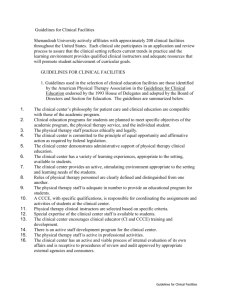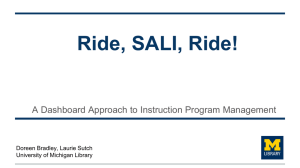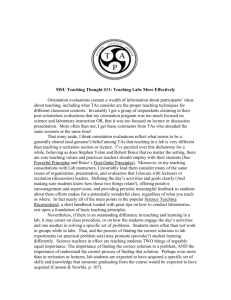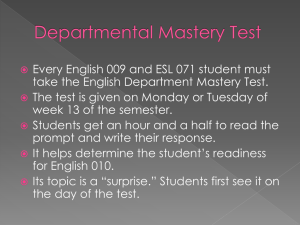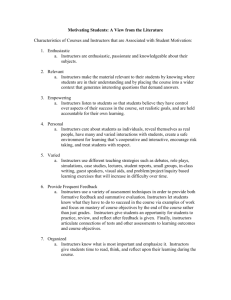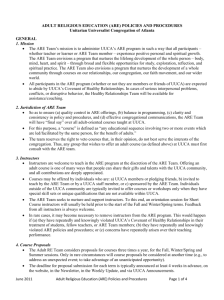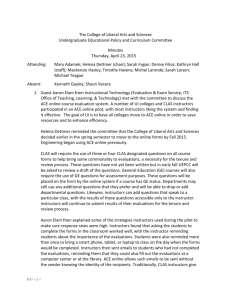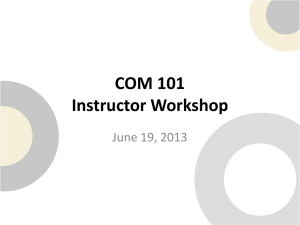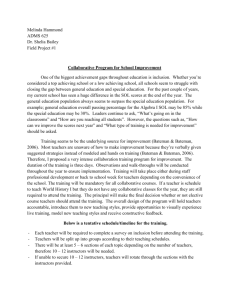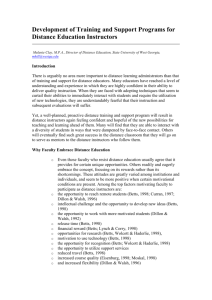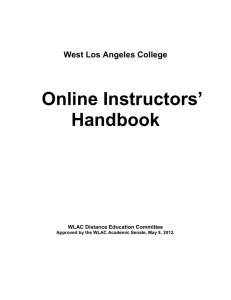Instructor Checklist - Salt Lake Community College
advertisement
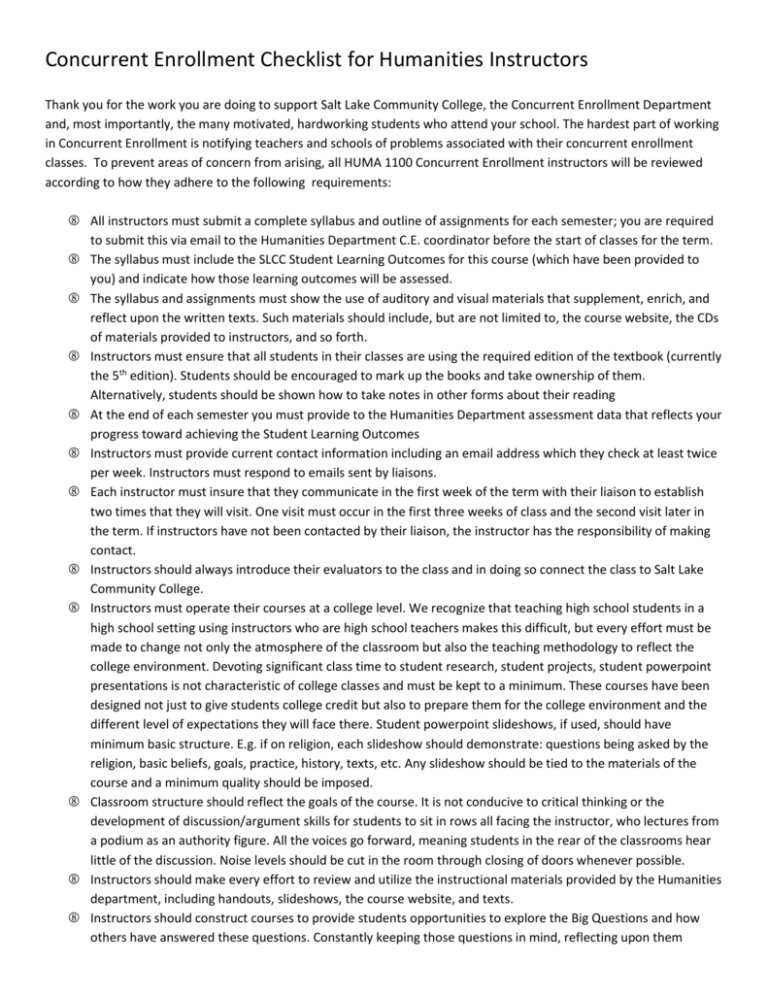
Concurrent Enrollment Checklist for Humanities Instructors Thank you for the work you are doing to support Salt Lake Community College, the Concurrent Enrollment Department and, most importantly, the many motivated, hardworking students who attend your school. The hardest part of working in Concurrent Enrollment is notifying teachers and schools of problems associated with their concurrent enrollment classes. To prevent areas of concern from arising, all HUMA 1100 Concurrent Enrollment instructors will be reviewed according to how they adhere to the following requirements: All instructors must submit a complete syllabus and outline of assignments for each semester; you are required to submit this via email to the Humanities Department C.E. coordinator before the start of classes for the term. The syllabus must include the SLCC Student Learning Outcomes for this course (which have been provided to you) and indicate how those learning outcomes will be assessed. The syllabus and assignments must show the use of auditory and visual materials that supplement, enrich, and reflect upon the written texts. Such materials should include, but are not limited to, the course website, the CDs of materials provided to instructors, and so forth. Instructors must ensure that all students in their classes are using the required edition of the textbook (currently the 5th edition). Students should be encouraged to mark up the books and take ownership of them. Alternatively, students should be shown how to take notes in other forms about their reading At the end of each semester you must provide to the Humanities Department assessment data that reflects your progress toward achieving the Student Learning Outcomes Instructors must provide current contact information including an email address which they check at least twice per week. Instructors must respond to emails sent by liaisons. Each instructor must insure that they communicate in the first week of the term with their liaison to establish two times that they will visit. One visit must occur in the first three weeks of class and the second visit later in the term. If instructors have not been contacted by their liaison, the instructor has the responsibility of making contact. Instructors should always introduce their evaluators to the class and in doing so connect the class to Salt Lake Community College. Instructors must operate their courses at a college level. We recognize that teaching high school students in a high school setting using instructors who are high school teachers makes this difficult, but every effort must be made to change not only the atmosphere of the classroom but also the teaching methodology to reflect the college environment. Devoting significant class time to student research, student projects, student powerpoint presentations is not characteristic of college classes and must be kept to a minimum. These courses have been designed not just to give students college credit but also to prepare them for the college environment and the different level of expectations they will face there. Student powerpoint slideshows, if used, should have minimum basic structure. E.g. if on religion, each slideshow should demonstrate: questions being asked by the religion, basic beliefs, goals, practice, history, texts, etc. Any slideshow should be tied to the materials of the course and a minimum quality should be imposed. Classroom structure should reflect the goals of the course. It is not conducive to critical thinking or the development of discussion/argument skills for students to sit in rows all facing the instructor, who lectures from a podium as an authority figure. All the voices go forward, meaning students in the rear of the classrooms hear little of the discussion. Noise levels should be cut in the room through closing of doors whenever possible. Instructors should make every effort to review and utilize the instructional materials provided by the Humanities department, including handouts, slideshows, the course website, and texts. Instructors should construct courses to provide students opportunities to explore the Big Questions and how others have answered these questions. Constantly keeping those questions in mind, reflecting upon them consciously in class, referring to them regularly, tying every aspect of the course to those questions, and employing critical thinking skills regarding them will ensure that the course is meeting the SLCC Humanities Department curriculum requirements. Overloading the course with details and expecting students to memorize such details is contrary to the goals of the course and should be kept strictly to a minimum. Instructors should slow down and concentrate more time on individual pieces and less on in-depth coverage of themes or topics Instructors must not add additional reading materials to the class without a written statement to the lead instructor regarding the item to be included, length, the place in the curriculum, and the rationale for inclusion, including evidence that it supports the learning outcomes. Written permission from the lead instructor is required before proceeding with inclusion. Finally instructors need to be thoroughly prepared. This means being thoroughly familiar with the content you are presenting and not have errors of fact concerning the ideas and individuals studied in the course, and it means demonstrating critical thinking skills to students by constantly questioning your own assumptions and biases. If your liaison determines that you have not met these requirements you will receive a letter outlining areas of concern, steps to be taken, and a deadline date by which those concerns should be addressed to the satisfaction of the department.
